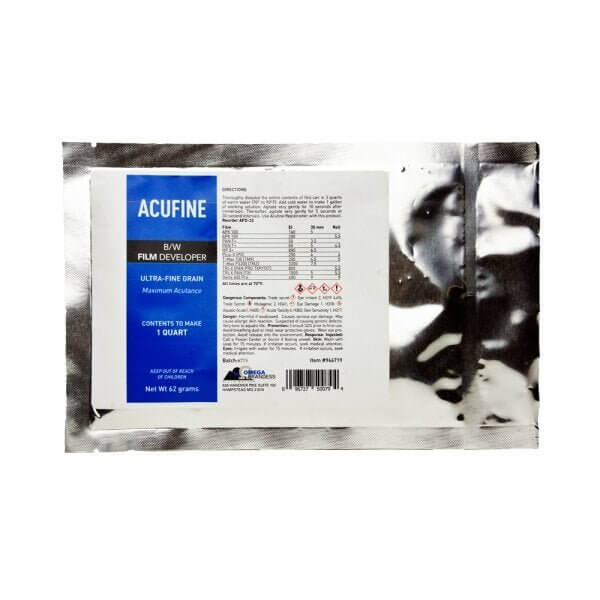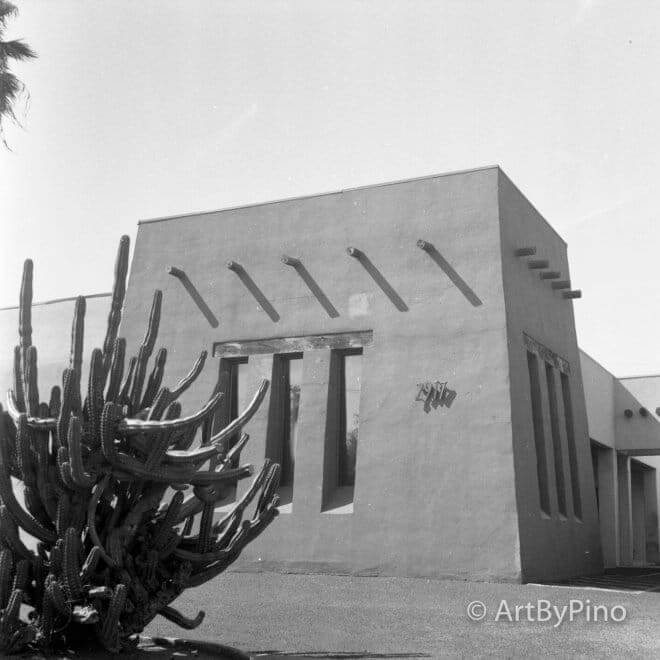
Acufine developer – different from diafine
Share
WHAT IS ACUFINE DEVELOPER?
A while ago, in my research on Black & White developers or film chemistry (the chemicals used to develop films), I stumbled upon a recommendation to try out Acufine Developer. It is considered a high/maximum acutance (in simple terms, sharpness), ultra-fine grain and, high-energy developer. Click on the image below to be taken to the specs for the developer.
Diafine is a two separate solutions developer where all speed and (BW) film types are developed for the same time. In other words, no time-temperature compensation is needed. Stay connected for a future blog post on Diafine. There is also the ACU-1 developer which is a one-shot developer with similar characteristics as the Acufine (based on the documentation, I have not used it).
WHY USE ACUFINE? WHY NOT USE ACUFINE?
If you like using say, Kodak TRI-X 400 because of its unique characteristic but, want to shoot it at 1600 but, not get the grain associated with using a 1600 ISO setting, Acufine would be the answer. In other words, you can retain the superior qualities of the films of your choice like the grain structure and resolutions but, shoot at higher speeds. This opens up the possibility to shoot a variety of slow speeds films in lower light settings without sacrificing the sharpness.
Another great reason to use it is that it is considered a panthermic developer meaning that it works at temperatures between 70-90 F without requiring any adjustments in the developing cycle. It is also a high-energy developer meaning it works fast with minimal or gentle agitation. For example, Fomapan 100 shot at box speed needs 3 1/2 minutes of developing with initial gentle agitation for 10 seconds followed by 5 seconds on subsequent 30-second intervals followed by the usual fixing cycle with a rinse in-between the developer and the rapid-fixer. If you prefer inversions, no more than 2 inversions per 5 seconds. Of course, a wetting agent at the end like PhotoFlo 200 is something I always use for all my Black & White development. The other nice thing is that it is a single-mix powder. No A + B. Distilled water is recommended if your water is high in mineral or alkaline content.
On the flip side is the cost of Acufine. A quart of the powder costs about $15 plus tax + shipping. Powder to make a gallon runs $32 + tax + shipping. You can expect to get 16 rolls per quart provided you store in air-tight and dark containers. The first 4 rolls can be developed at normal times and following that, add 2% time for each additional roll.
The photographs below from Santa Ana Cemetery were photographed on Ultrafine 100 and developed with Acufine. The scans are straight out of the Epson V600 scanner and are not corrected in any way other than cropped and straightened.







2 comments
Souped thousands of rolls 35 mm/36 through 15 years of fashion photography. Still love it😎
You will love your prints 😎